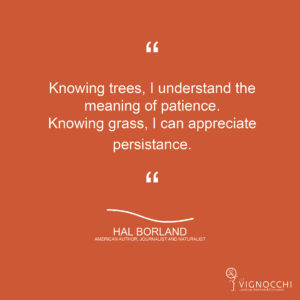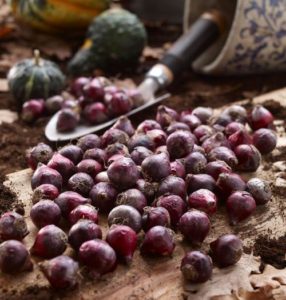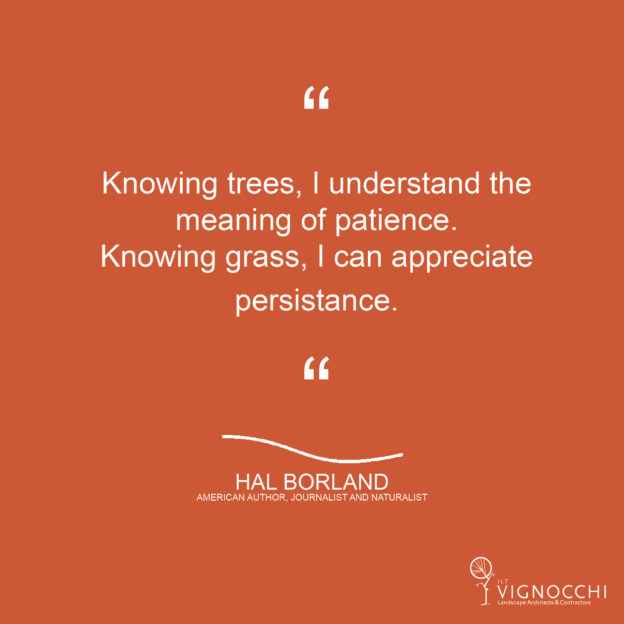
Tag Archives: landscape ideas


What’s the deal with Dirt
My guess is that many people don’t find dirt very interesting. But the truth is that people study it intensely. We actually employ someone who is a soils expert, Mike Curry!
So what exactly Is pulverized topsoil? Topsoil is the upper layer of the Earth’s crust, usually the top 2 to 8 inches. It has the highest concentration of microrganisms and organic matter and is where most of the soil’s biological activity occurs. Plants generally sink their roots into and obtain most of their nutrients from this rich layer.
This high concentration of organic matter is actually what turns soil black. So the darker it is, the more nutrients in the soil, the better your plants and turf will do. Ever notice “grey” colored dirt. It often occurs in areas where a lot of salt is applied during snow removal services. That’s because those microorganisms have been killed and the organic matter is leached out.
This is why it is so important to install mulch and compost in planting beds. It helps provide a protective layer and breaks down over time, reintroducing those beneficial nutrients back into that top layer of soil.
It’s also equally as important that you topdress your lawn with some kind of compost when core aerating and overseeding for the same reason.
Most people probably don’t know how topsoil is created. It’s a fairly simple process. Most often topsoil is taken from construction sites where there are large open spaces that need to be excavated anyway. That soil is then “pulverized” through a machine to remove any debris as well as giving it a more consistent texture that makes it easier to spread and fine grade.
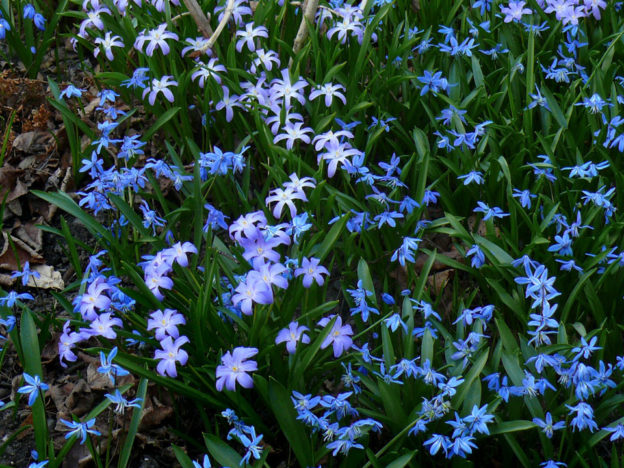
What is Scilla?
What is Scilla?
We have probably all marveled at the beautiful fields of blue that pop up around this time of year. Customers ask me all the time in wonderment, “What is that?!”
Scilla is a member of the lily family. Most varieties bloom in spring whereas a few are fall bloomers. It is coveted for it naturalizing tendencies. So year after year they will slowly multiply to form that lovely blanket of blue. I always warn that they aren’t for the faint of heart. These are a true gardeners plant. As seen below, if they love their home they can take over.
A mass of ScillaThey like full sun locations with well drained soil. Plant them en masse for the best show. you can even pair them with a Tete e Tete daffodil, which is a lovely dwarf variety in a creamy yellow. Once they are done blooming, they are similar to other bulbs and do best if you let the leaves wilt. Other plants like ferns and hosta can be used to help mask the withering leaves as they come up as the scilla is nearing the end of its season.
See how tiny the Scilla bulbs are?Once the Scilla have put on their show they disappear completely, back into dormancy for their next display the following year. If you have never noticed this unique plant, take the time to look around…you won’t forget it once you see it.
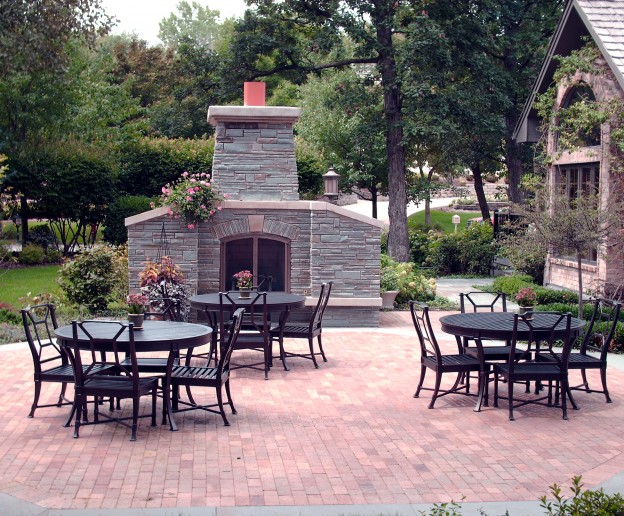
Hire a Professional
You hear it all the time. If you are gong to hire someone for a project in your place of business or you home…hire someone who knows what they are doing. Think about it, if you received the news that you required surgery, would you hire someone who had not been to medical school? Probably not.
The perception of the landscape industry has always been an uphill battle. Consumers often don’t consider the importance of professional degrees and certifications as a necessity. I assure you, I have heard enough horror stories to know that hiring an individual or organization with the correct qualifications will save you money and peace of mind in the long run.
We get at least two phone calls a year inquiring if we can fix something that a consumer has already paid for. Perfectly good money wasted for all sorts of reasons…drainage issues were never considered. Water can be one of the most quickly damaging elements to your property. There is always the frustrated person complaining about a walkway or patio that after one winter are failing, most probably because the base layer was improperly considered and installed. Oh and that one year warranty they told you about…good luck getting them to return the call.
Maintenance is a huge issue. If pruning isn’t correctly done it can and mostly likely KILL your plants. When you invest in a new garden and don’t cultivate and weed properly, the weeds WILL win. And believe it or not, there is a correct and incorrect way to mow grass.
I could go on and on, however I won’t. What I will do is let this wonderfully created and produced video do the talking. ILT Vignocchi and Montale Gardens are proudly featured in a branding video for our industry. It shows my fellow contractor’s pride in what they do, a down right love for their crafts. CLICK HERE TO WATCH THE VIDEO. I know you will enjoy it.
Benefits of Dormant Pruning
As landscape architects and arborists we often find that plant material on our new residential, commercial and HOA sites have been left to get overgrown and mismanaged. The key to getting the plant material looking healthy, vibrant and growing properly again is of course dormant pruning.
Dormant pruning takes place during the winter months and this is valuable for many reasons. With the leaves absent precision pruning is much easier. Cutting the plant in the right spot helps the plant heal better and faster in the growing season. It also allows us to see the shape of the plant better and see limbs and stems that are either damaged, diseased or crossing. The colder months also mean less airborne diseases that could affect the fresh wounds of plants.
A sure sign that dormant pruning needs to be done is the evidence of witches broom which is a dense mass of shoots growing from a single point. This happens when the plant is perpetually pruned or sheared on the top and never in the middle or base of the plant. This type of pruning leads to a plant that is top heavy with leaves, but looks bare and leggy on the stems and base.
Dormant pruning removes the witches broom, allows us to remove overgrown stems at the base of the plant and makes it easier to remove unwanted growth. These fixes allow sunlight and air to get to the entire plant and not only to the top sections. Heights of plants are also much more easily controlled during dormant pruning allowing the plant to take on a natural shape during the growing season without blocking windows or doors.
-Aaron Zych
Tulip Trivia
As I sit on this blisteringly cold January day my mind drifts to our lovely friend, the tulip.
You see my mother loves tulips. Even though we lived in Riverwoods and had to contend with deer feasting on them she would plant them. Not en masse but in charming little bundles that would cheerfully pop up in spring. She would sometimes even pair them with Allium, in order to deter our beautiful yet hungry friends.
Her love affair continues today, although now she must battle chipmunks and squirrels who enjoy digging them up and moving them around. This year I finally convinced her to even try my favorite tulip blend created by a most trusted vendor. It’s called French Blend. Wow, wait until she sees her spring display!
It’s difficult to think of spring on such a snow covered day, but it will come. My contemplating of the tulip has led me to some poking around. I’ve found some interesting tidbits that I thought I’d share…
- Origin Story: Thought that tulips originated in Holland? They did not. It is widely believed that they were first cultivated in a corridor along the 40° latitude between Northern China and Southern Europe.
- Tulips travel to Turkey: When the tulip first made its way to Turkey it was revered by the Sultan and was cultivated solely for his pleasure and that of his entourage. He forbid tulips to bought or sold outside of the capital. The punishment? Exile.
- A Status Symbol: Tulips were cultivated to be curated. They became a symbol of status and power for both Royalty and the very wealthy. Mirrors were placed around arrangements and in gardens to create the appearance that the owner could afford more than they actually could.
- A Bricklayer’s Wage for 15 years: At the height of what is called “Tulip Mania” once they had reached Holland, a single bulb would go for the price of a homepurchased in Amsterdam, or… a bricklayer’s wage for 15 years.
- There is an actual Tulip Museum…Outside: Keukenhof is worth the visit in May each year. I have been and I will never forget it. It is display garden after garden that is painstakingly designed and installed annually.
And that my friends, is just some of the fun facts around out delightful spring friend.
Donna Vignocchi Zych
Turf Management: Adjusting to Drought
If your property does not have an automated irrigation system and you have not watered your turf regularly this summer, you may have noticed it is turning brown, indicating it is reacting to the impact of the summer drought we are in the midst of here in the northern Chicagoland area. Your grass has a natural drought defense system which shuts down the expendable parts of the plant in an effort to keep its roots alive, hence the brown coloration at the surface. The good news is, turf grasses are resilient plants and can survive a long time without water. The bad news is, not only does the brown grass not look good, the dormant grass will become more susceptible to invasive weeds and crabgrass which tend to find room to root and grow in the stressed turf. Generally, though, once moisture returns, most grasses will recover without leaving permanent damage. The weeds and crabgrass can be treated, and your once beautiful lawn should be restored.
The simplest and best practice that we have found for helping the turf survive and recover from the effects of a drought, if regular watering is not an option, is to make some simple adjustments to our mowing operations. We raise our mower blades slightly, to 3″ – 3.5″, to minimize the heat/sun exposure of the root systems of the turf that results from mowing too low in these hot, dry conditions. Additionally, you will find that we will forgo mowing whenever warranted, on a given visit, if the grass has gone dormant and has not grown sufficiently to necessitate a mowing. This will prevent the potential damage that could be done to the dry, brittle grass blades as the heavy mower wheels roll over them. The added benefit of not mowing is the extra time we can spend on your property detailing and performing more labor-intensive gardening operations.
Furthermore, the longer grass blades will shade the ground underneath, keeping it cooler and inhibiting water evaporation. The granular fertilizer we apply during your lawn care visits will stimulate new growth once rain returns or the lawn is watered. If you are going to water your lawn, you must be consistent. If you cannot deeply water your lawn one inch or more per week, it is better to let your lawn go into a state of dormancy. Light, infrequent watering can do more harm than good as it encourages shallow root growth which then makes the turf even more susceptible to disease and insect infestations during periods of stress. So, it is best to commit to keep up with the watering or let it go and wait out the drought.
When temperatures start to cool down and rainfall increases, your lawn should come out of dormancy and begin to recover. The turf plants will start growing new roots and new plants will germinate to replace those that were damaged or even killed during the summer. Core aeration and over seeding in the fall are two great ways to help your lawn recover from a tough drought season, like the one we are currently experiencing. Strengthening the roots is critical to maintaining healthy turf, and the core aeration process will open the lawn to provide more air, water and nutrients into the turf root zone. Following up the coring operation immediately with over seeding will help to generate new seedlings to fill in sparse areas. Grass seed needs to come in contact with soil and receive adequate moisture to remain viable once the germination process begins. A good portion of the seed will end up in the core holes, which ends up being a great place for the seed to germinate. The soil in the core holes will remain moist and cool, and the seed will have a much better chance of germinating.
Kevin T Block
Suburban Sanctuary NEW You tube video
On a sprawling 3 acres in Itasca, Illinois this property includes several relaxing vignettes, a putting green and tennis court. Perfect for entertaining it also boasts a custom fireplace and spa.
You have GOT to see this!
Don’t forget to follow us on You Tube to stay up to date on all of our exciting drone videos!
New You Tube Video!!

